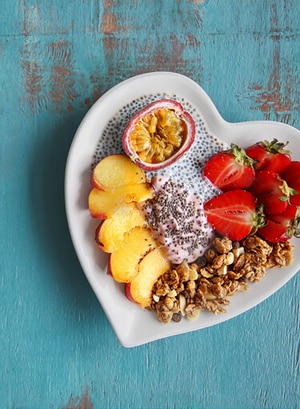- My Ramadan
- Recipes
- Nutrition And Health
-
Brands
- Aero
- COFFEE-MATE®
- CRUNCH® CEREALS
- Cocoa Puffs®
- Fitness Toasties
- illuma 3
- KLIM®
- MAGGI®
- NAN® 3
- NESCAFÉ®
- NESQUIK®
- Nestle® CERELAC®
- Nestle® Pure Life®
- NIDO® PLUS
- PROGRESS KIDS GOLD
- SMARTIES®
- COUNTRY CORN FLAKES®
- CHOCAPIC®
- COOKIE CRISP®
- HONEY CHEERIOS®
- KITKAT®
- LION® CEREAL
- NESCAFÉ® Dolce Gusto®
- NESQUIK® CEREALS
- Nestle® FITNESS®
- NESTLÉ® DESSERT SOLUTIONS
- NIDO® FORTIFIED
- PROMISE PE GOLD
- Perrier®
Handy hints on microwave use
If you ask people what’s the most popular kitchen appliance in any home, one of the leading responses to that question will be, “the microwave!” Compared to the days of old when everything was heated on the stove, today, you can find a microwave oven in almost every home! It makes our lives easier in case we choose to defrost, cook in it or heat our food quickly.
Are microwave ovens safe?
This question about microwave safety was voiced years ago. But you can put your mind to rest because manufacturers follow strict guidelines to meet radiation safety standards. The key thing to remember is that microwave use is safe as long as the food is placed in microwave-safe containers. Make sure to avoid normal plastic containers and plastic bags, in order to prevent the transfer of chemicals to food.
The right way to cook with a microwave:
- Arrange food items evenly and uniformly in a covered dish and add some liquid if needed. Cover the dish with a lid or wrap; however, a small vent should be left to prevent steam build-up. Oven cooking bags can also be used for safe and even cooking in the microwave.
- If your microwave does not come with a carousel, then you’ll have to rotate the dish several times in the microwave, for even heating.
- Because foods and liquids don’t heat uniformly in the microwave, stir the food midway through cooking and turn large food items upside down to eliminate cold spots that might harbour bacteria.
- Cut foods into evenly sized pieces if possible. If not, put larger and thicker items on the sides of the dish and cook on medium power. This will allow the heat to reach the centre without overcooking the outer areas.
- Some foods like potatoes need to be pierced before putting them in the microwave to prevent them from exploding.
- Allow 2-minute standing time before checking that cooking is complete. Food continues cooking even after the microwave is turned off.
- Use potholders to avoid burning your fingers while taking food from the microwave, and uncover the dish away from your face.
Good to know:
Cooking with a microwave oven not only offers speed, but also nutritional benefits, since fast cooking helps retain the vitamins in food.
Take extra care when heating in a microwave:
- Similar to cooking, when heating foods in the microwave, cover foods with a lid or a microwave-safe plastic wrap to prevent food from drying out, and to also provide safe, even heating.
- Ready meals and leftovers should be heated until food is steaming and hot to the touch.
- Do not heat your baby’s bottle in the microwave. The bottle may seem cool to the touch, but the liquid inside may become extremely hot and could burn the baby's mouth and throat.
- Take extra care when heating food for your children in the microwave. Because of uneven heating, children can get very hot spots in their dishes. Stir the food halfway through and at the end of heating. Allow 2-minutes standing time and make sure to check the temperature of the food before serving.
How to defrost in a microwave:
- When defrosting, remove the food from the store wrap. Supermarket packaging such as foam trays and plastic wraps are not heat-stable at high temperatures and therefore should not be introduced in the microwave.
- Clean the interior of the microwave and the carousel properly after defrosting to remove any liquid drips and splashes.
- You should cook meat, chicken and fish immediately after defrosting since some areas of the frozen food could warm up and begin cooking at defrosting temperatures.
So whether you use it for cooking, defrosting or re-heating, microwaves make good sense to have in a kitchen. Especially since everything around us is all about being fast – work, kids, family obligations, and cooking time in the kitchen. This is where the usefulness of a microwave comes into play, for time-saving, safety and maintaining the quality of food.




